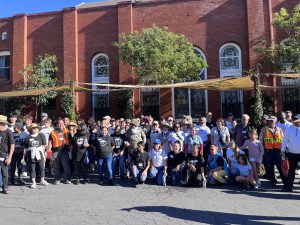Learn More
High Cost Lenders
Metadata
Variable Definitions:
Auto Title Loan Lenders: The number of vehicle title lenders, where borrowers can take out high-interest loans in exchange for a car title, in a given area
Payday Lenders: The number of payday lenders, where borrowers receive a short-term, high-interest loan that is typically due on the next payday, in a given area
Source:
California Department of Business Oversight (provided by the Los Angeles County Department of Consumer & Business Affairs Center for Financial Empowerment)
Years Available:
2019
Why are these variables important to measure?
High Cost Lenders
High-cost lenders include payday lenders and vehicle title lenders. Also known as predatory lenders, high-cost lenders market their loan products to consumers who need quick cash but may not qualify for loans at traditional financial institutions because of their credit history or income. However, high-cost loans can be dangerous as they carry an average annual percentage rate (APR) of 391% compared to about 10% for banks and credit unions. These extremely high interest rates, often accompanied by additional fees, mean that loan recipients who cannot repay their loans on time quickly accrue debt that can become insurmountable and financially devastating.
Residential segregation played a substantial role in predatory lending. Black and Latino/a borrowers are more likely to receive high-cost home purchase and refinance loans in metropolitan areas where their racial group is highly segregated. Previously redlined neighborhoods were flooded between 2000 and 2010 with adjustable-rate mortgage loans (ARMs) at fluctuating interest rates and high-cost subprime loans for individuals with impaired credit records. These unsustainable loans created concentrated foreclosures in California neighborhoods; Los Angeles zip codes with 80% or more of the residents identifying as people of color suffered over 90% of the city’s foreclosures during the 2008 Recession. High and unpredictable fees, financial institutions not offering the needed services to low-income communities of color, and general distrust of big banks are key reasons that Black and Latino/a households are 60% less likely than white households to have a bank account, leaving them more susceptible to turn to costlier financial services and payday loans.
Written by Gabriela Magaña
Citation:
Been, V., Ellen, I., & Madar, J. (2009). The high cost of segregation: exploring racial disparities in high-cost lending. The Fordham Urban Law Journal, 36(3), 361. Link.
Center for Responsible Lending. “The Debt Trap of Triple-Digit Interest Rate Loans: Payday, Car-Title, and High-Cost Installment Loans.” March 2019. Link.
Stein, K. (2010). “From Foreclosure to Re-Redlining.” California Reinvestment Coalition. Link.
U.S. Government Accountability Office. “More than 7 Million U.S. Households Have No Bank Account. Why?” April 2022. Link.
Related Data Stories

The Book Truck: Delivering Literacy in Southern California
Why Do Some People Read? For children in some communities, books and reading are omnipresent. Reading begins as amusement and entertainment and grows into a



